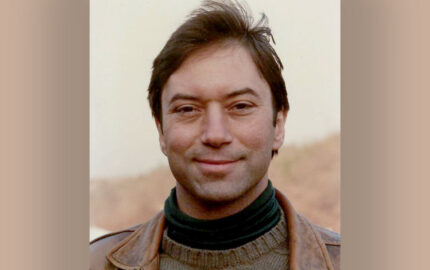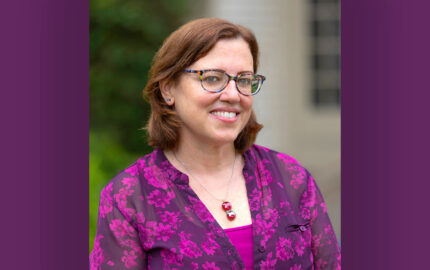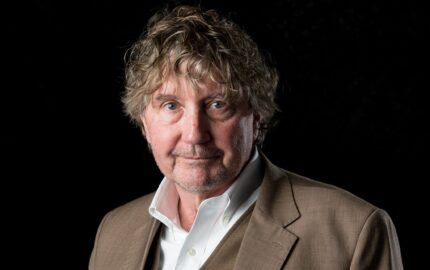
Not pictured: Robert McCary, Lewis Nkosi, Michinobu Shirakawa, Francis Wong.
Dear Bob Giles:
I opened my Spring 2011 Nieman Reports the other day and the first thing that caught my dazzled eye was your essay, “The Value of the Nieman Fellows’ Experience.” Line by line I was drawn into it, a bit amazed and mildly ashamed of myself at the same time. You were writing about my class, the 1960-1961 Niemans and about fellow-classmen Aubrey Sussens and Lewis Nkosi from South Africa and, in no small way, about me. And I hadn’t even stopped in my life long enough to realize that I had more than an 83rd birthday to celebrate last April of 2010 – I had the 50th anniversary of what I have felt ever since was the most important year of my life.
1960*. That was my year. For three years before I had lusted for the Nieman. I had Harvard course descriptions stacked in my writing room in my Virginia Beach apartment. I had picked out twenty-five courses (or was it thirty-five?) I simply had to take, several hundred hours of library time I had to fit in along with the intimate sessions with great reporters, come to Harvard to sit with young people like me, who envied and wanted to emulate them. Not to mention the shoulder-to-shoulder company of one’s peers, or would they be, to a man (no women in my class, not quite yet) one’s betters? I had the fever and I had it bad. (* Smith began his Nieman year in 1960 but is officially a member of the class of 1961.)
I missed out in 1959. But after the interview, I got a letter from Louis Lyons that a friend from an earlier Nieman class told me was a masked encouragement to apply again. I was writing editorials at the time for The Virginian-Pilot in Norfolk under the great Lenoir Chambers, one of the unforgettable tutors in my life. He encouraged me to try again. My memory fails me on whether this was the year in which he won his Pulitzer Prize for editorials on school desegregation, but in any event he was chosen to be on the Nieman selection committee. I am sure of this because he told me he would have to excuse himself from contributing to any discussion on my application. Anyway, I was among the grateful chosen.
I was a voluntary southerner, a Yankee born and educated in the borough of Queens, New York City, but I had attended the University of North Carolina, had majored in journalism and on the day the Supreme Court ruled in the Brown v. Board case, swore to devote myself to involvement in the case for the overthrow of Jim Crow. Early on I wrote two articles for the Virginia Quarterly Review and one for Commentary Magazine on matters relating to the fierce battle over desegregating the schools and had discovered that Prince Edward County in Southside Virginia planned to abandon public schooling and go to private schools for white children only, whether or not massive resistance won out. It failed, of course, but after several visits to Farmville, the county seat, a car-drive away, I had a strong feeling that Prince Edward would live up to its threat and was at work researching the case, driving to Prince Edward to spend weekends, holidays, and vacation time meeting white and African-American sources there at the same time I was applying for my Nieman.
You write that since the late 1950’s Louis Lyons “had begun to seek out journalists from the American South who would use their year at Harvard to sharpen their insight for their reporting and commentary on the American civil rights movement.” I didn’t know that was on dear Louis’s mind, but I was clearly one of those you describe, as was Mac Secrest, who edited an “integrationist” newspaper in a small town in South Carolina, and John Herbers, a Mississippian who went on to write powerful civil rights stories for The New York Times. I built my case for a Nieman to a certain extent on the book I had committed myself to write on the Prince Edward case, which was one of the five bound together in Brown. As a Yankee born, I knew little of the South’s past (beyond what I had gotten from William Faulkner) and – I told the selection committee—I would surely take Paul Buck’s course on Southern history. I was also keenly interested in constitutional law in part as a result of the Supreme Court’s decision and would take a course on that. I planned also to take a course being taught by Tom Pettigrew on Gordon Allport’s book, “The Nature of Prejudice.” And, why spend a year at Harvard without taking the course on American social history by Oscar Handlin and the course on economics being taught by John Kenneth Galbraith or, for that matter, the course on American intellectual history being taught by someone certainly able, substituting for Arthur Schlesinger, Jr., who was off to do his part in the Kennedy administration? (I had no idea, of course, that Schlesinger, senior, would be one of my class’s best friends and an influence on all of us).
I still remember it as a magical year, as I assume do the hundreds of others who have been blessed in this way. Little things stick in my poor memory – the fact that the students on the Leif Ericson bridge, which we walked across to go to Harvard football games (we sat up in the press box) were selling Greek drama and books on philosophy rather than scalping tickets to by-passers, and the fun I had in my one family chore, taking my blonde-haired, 18-month-old daughter with me to the laundromat to be sighed over and petted by the dark-haired Lebanese women who lived all around us in our Watertown apartment. But the serious stuff was great as was the entire business of working side-by-side with ambitious newsmen and being in the company of the Nieman guests. Late at night, while wife and child slept, I typed up my raw notes from the day’s classes and library work, all to be compiled in a big scrapbook.
And when I got home and back to my newspaper, I made haste to get over to Prince Edward again where the schools were closed and the African-American parents were struggling to find some way to restore continuing education for their kids. Many failed and in the five years the public schools were closed, a huge loss of life chances was extracted from school-age children, never in many cases to be made up. My book, “They Closed Their Schools” came out in 1965 showing I am sure the benefit of early editing by Ted Morrison of the Harvard English department and the advice of Pettigrew and others of the faculty. After the hardback was out, it became one of the first University of North Carolina Press paperbacks. But its life did not end with the publication. Years later, the community reprinted the book not once, but twice, as the old copies had been worn out with use – in some cases bound up with tape to hold the pages together and in some cases with pages substituted for by machine-made copies. And – to my delight – this “black belt” county in Virginia had undergone a complete reversal of attitude and now was involved in a serious effort to overcome all racial bias – the public schools thriving with full integration and being considered a model for the country.
My life in the meantime was affected strongly by the Nieman year. I left the newspaper business in 1968—after four years of editing the editorial page of The Charlotte News — to join an anti-poverty organization formed in Chapel Hill and called the North Carolina Manpower Corporation. We were an experiment funded by the Office of Economic Opportunity in the Johnson administration’s “War on Poverty,” staffed one-third by whites, one-third by African-Americans, and one-third by Lumbee Indians, natives to the eastern part of our state. Our mission was to find new cutting-edge means of attacking problems of poverty in the nation through training, education, and economic development. I was one of the planning staff and the chief writer for this organization, authoring numerous reports, one of which was turned into a program by Bill Moyers, and producing a book-length monograph on the problems of children with disabilities (“Seven Special Kids”), which was widely distributed among poverty-fighting organizations throughout the country. That monograph led to a small Ford Foundation grant to me to write a book. I chose the leading case on education of kids with disabilities Rowley v. School Board – and produced “A Case About Amy” in 1996, which was published that year by Temple University Press. To my great pleasure I have learned that both of my books have been and are still in use at major universities around the country.
I hope it is clear that I owe the Nieman year a great deal for how my life has turned out. I am enjoying good health for a man of my age and have turned to writing short stories in recent years. I’m having success in getting these stories published now – writing fiction has been a lifelong desire and I am pleased and happy to be still around to follow that star for a bit longer.
I did not want this opportunity to pass to thank you, as the executive head of the foundation, for what you have done and, most particularly, for the essay that brought this rush of the past back to an old journalist. I know that newspapers are threatened seriously in these days but I say long live the press, whatever its form, and long live the Nieman Foundation.
All best,
R.C. Smith


